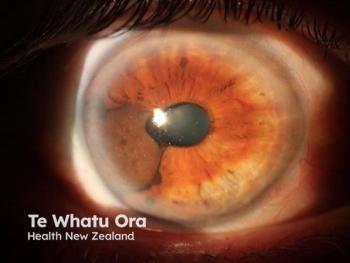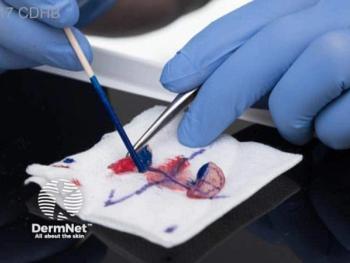
Melanoma bank supports prospective research
Frozen primary tumor samples will allow researchers to track lesions as they evolve and better understand the characteristics and biomarkers that distinguish aggressive melanomas.
Perhaps the most groundbreaking element of the International Melanoma Tissue Bank Consortium (IMTBC), run by the AIM at Melanoma Foundation in Frisco, Texas, is its ability to support prospective research, says an expert. Rather than waiting until patient outcomes are known, she said, this capability could allow researchers to update their understanding of dangerous tumors as they evolve.
“This is basically the only prospective study that is planned to see why different melanomas evolve differently,” Maritza Perez, MD, who is not involved with the project, told Dermatology Times®. “It’s prospective in that researchers are taking frozen tumor samples before they know what is going to happen with the patient.” She is a professor of dermatology at the University of Connecticut School of Medicine in Farmington, Connecticut.
Using frozen primary-tumor samples will allow preservation of RNA and other proteins typically lost in the formalin-fixed, paraffin-embedded process. Focusing on primary melanomas is paramount because these tumors contain the melanoma’s original genetic profile. “The metastatic tumor has already induced lots more mutations,” said Perez. “You need the original tumor to see the markers that lead to a bad outcome.” For each sample, the tissue bank also will collect full, depersonalized patient information, along with blood and other samples.
In late May, AIM announced the resumption of IMTBC activities after a COVID-related slowdown.1 As of March 31, the project had collected 69 samples total at 4 initial sites:
- Hillman Cancer Center, University of Pittsburgh Medical Center (Pittsburgh, Pennsylvania)
- Knight Cancer Institute, Oregon Health & Science University (Portland, Oregon)
- California Pacific Medical Center (San Francisco, California)
- Robert H. Lurie Comprehensive Cancer Center, Northwestern University (Chicago)
Ramping up to a planned initial critical mass of 500 samples will take years, Perez said. “But if you want to do an elegant, prospective study, this is the only way to do it.”
Presently, Perez told Dermatology Times®, IMTBC researchers are collecting data that they may not know what to do with initially. But as tumors evolve, she said, perhaps a patient who started with a thin TIb melanoma becomes lymph-node positive in 3 years and metastatic in 4. Over time, researchers will try to identify characteristics or biomarkers that distinguish this tumor from less aggressive ones.
DecisionDX-Melanoma (Castle Biosciences), extracts DNA from formalin-fixed melanoma samples and determines how much genetic material the sample shares with metastatic breast, lung, and other cancers. “It’s a totally different animal,” she said, “but it’s the only tool we have right now to identify potentially really bad melanomas from not-so-bad ones.”
Decoding the human genome was just the first step in understanding how cancers, including melanoma behave, Perez added. Without messenger RNA (mRNA) to indicate the functionality of every exon, she said, knowing the genome’s structure yields little clinical utility.
Information encoded in mRNA will be crucial to projects like the IMTBC, said Perez. If one can decipher the genomic characteristics of malignant melanoma, she explained, one can treat more aggressively from the outset. One of her patients, for example, has a nodular, amelanocytic tumor with 3 mm depth, 3 mitoses per cm2, and ulceration. DecisionDX identified it as stage IIb melanoma. Even if a sentinel lymph node biopsy proves negative, Perez said, this patient should qualify for immunotherapy. And identifying specific markers that make this patient’s tumor behave aggressively “will be good for the next patient who has the same features and histology in the same type of tumor, but smaller. You can use it as a prognostic tool.”
Although physicians’ appreciation of the importance of RNA has grown considerably during the last 2 decades, collecting RNA creates challenges. “When I do a biopsy for suspected melanoma,” said Perez, “I’m doing a shave biopsy, putting it in formalin, and sending it out to a dermatopathologist. In 24 hours, I have my results.”
In contrast, the IMTBC requires participating facilities to have an on-site dermatopathologist who immediately freezes half the sample in liquid nitrogen and stores it on-site for future use. Outside of research centers such as the 4 initial IMTBC sites, Perez said, this approach is impractical for the average dermatology office.
Whether the IMTBC will collect enough samples from patients of color is “the $2 million question,” Perez added. Most clinical researchers are very aware of the need to include minorities in trials, said Perez, because minorities generally suffer from the same diseases as White patients, and, with melanoma, tend to fare worse due to later diagnosis. However, getting adequate skin of color (SOC) representation can be challenging because melanomas are less common in these patients.
Patients with SOC moreover are more likely to develop acral lentiginous melanomas, which Perez said should be among key criteria signaling poor melanoma prognosis,2 just as deep melanomas, nodular melanomas, and a high number of mitoses generally portend poor prognosis.
The only reliable way to increase SOC representation in melanoma banks, said Perez, is to have a physician at each location who specializes in SOC and therefore can recruit patients of color. “It’s been demonstrated that patients tend to gravitate to doctors who look like them and understand them.”3,4
Disclosures:
Perez reports no relevant financial interests.
References:
1. AIM at Melanoma Foundation. FAQ and update on AIM at Melanoma’s International Melanoma Tissue Bank Consortium.https://www.aimatmelanoma.org/faq-and-update-on-aim-at-melanomas-international-melanoma-tissue-bank-consortium/. May 25, 2022. Accessed June 1, 2022.
2. Di Carlo V, Stiller CA, Eisemann N, et al. Does the morphology of cutaneous melanoma help explain the international differences in survival? Results from 1,578,482 adults diagnosed during 2000-2014 in 59 countries (CONCORD-3) [published online ahead of print, 2022 Mar 29]. Br J Dermatol. 2022;10.1111/bjd.21274.
3. Laveist TA, Nuru-Jeter A. Is doctor-patient race concordance associated with greater satisfaction with care? J Health Soc Behav. 2002;43(3):296-306.
4. Hooper J, Shao K, Feng H. Racial/ethnic health disparities in dermatology in the United States Part 1: overview of contributing factors and management strategies [published online ahead of print, 2022 Feb 7]. J Am Acad Dermatol. 2022;S0190-9622(22)00194-3. doi:10.1016/j.jaad.2021.12.061
Newsletter
Like what you’re reading? Subscribe to Dermatology Times for weekly updates on therapies, innovations, and real-world practice tips.

















